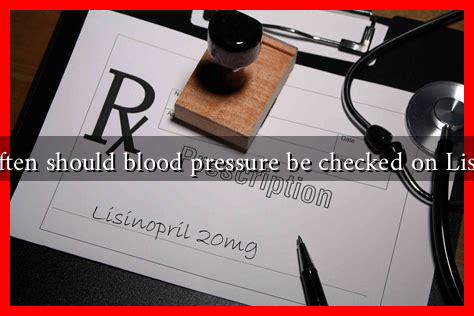-
Table of Contents
How Often Should Blood Pressure Be Checked on Lisinopril?
Lisinopril is a widely prescribed medication used to treat high blood pressure (hypertension) and heart failure. As an angiotensin-converting enzyme (ACE) inhibitor, it works by relaxing blood vessels, making it easier for the heart to pump blood. While Lisinopril can be highly effective, monitoring blood pressure regularly is crucial for ensuring optimal treatment outcomes. This article explores how often blood pressure should be checked while on Lisinopril, the factors influencing this frequency, and best practices for monitoring.
Understanding Blood Pressure Monitoring
Blood pressure is measured in millimeters of mercury (mmHg) and is expressed as two numbers: systolic (the pressure in your arteries when your heart beats) over diastolic (the pressure in your arteries when your heart rests between beats). Normal blood pressure is typically around 120/80 mmHg. Regular monitoring is essential for individuals on Lisinopril for several reasons:
- To assess the effectiveness of the medication.
- To detect any potential side effects or complications.
- To make necessary adjustments to the treatment plan.
Recommended Frequency of Blood Pressure Checks
The frequency of blood pressure checks for individuals taking Lisinopril can vary based on several factors, including the severity of hypertension, the presence of other health conditions, and the patient’s response to the medication. Here are some general guidelines:
- Initial Phase: During the first few weeks of starting Lisinopril, blood pressure should be checked at least once a week. This allows healthcare providers to monitor how well the medication is working and to adjust the dosage if necessary.
- Stabilization Phase: Once blood pressure stabilizes and reaches the target range, checks can be reduced to every two to four weeks.
- Maintenance Phase: After achieving stable blood pressure, it is generally recommended to check blood pressure every three to six months. However, patients with additional risk factors may need more frequent monitoring.
Factors Influencing Monitoring Frequency
Several factors can influence how often blood pressure should be checked while on Lisinopril:
- Age: Older adults may require more frequent monitoring due to the increased risk of hypertension and related complications.
- Comorbid Conditions: Patients with diabetes, kidney disease, or cardiovascular issues may need closer monitoring.
- Medication Changes: If there are any changes in medication or dosage, more frequent checks are advisable.
- Symptoms: If a patient experiences symptoms such as dizziness, headaches, or chest pain, immediate blood pressure checks are warranted.
Best Practices for Monitoring Blood Pressure
To ensure accurate blood pressure readings, consider the following best practices:
- Use a Reliable Monitor: Invest in a validated blood pressure monitor for home use.
- Follow Instructions: Always follow the manufacturer’s instructions for proper use.
- Consistent Timing: Measure blood pressure at the same time each day for consistency.
- Rest Before Measurement: Sit quietly for at least five minutes before taking a reading.
Conclusion
Monitoring blood pressure while on Lisinopril is essential for effective management of hypertension and overall cardiovascular health. The frequency of checks can vary based on individual circumstances, but regular monitoring is crucial during the initial and stabilization phases of treatment. By adhering to best practices and consulting with healthcare providers, patients can ensure they are effectively managing their blood pressure and minimizing potential risks associated with hypertension.
For more information on blood pressure management and Lisinopril, consider visiting the American Heart Association.


